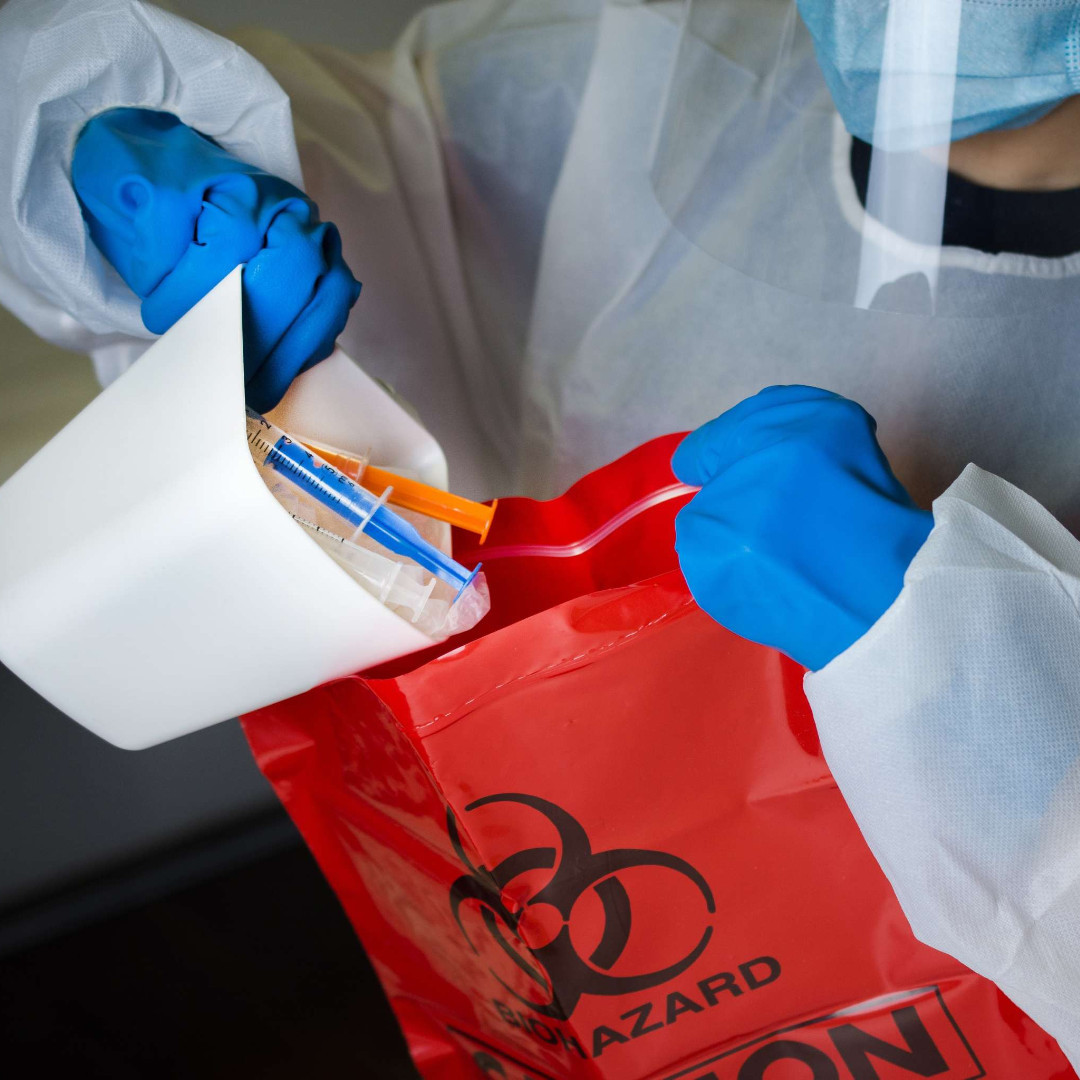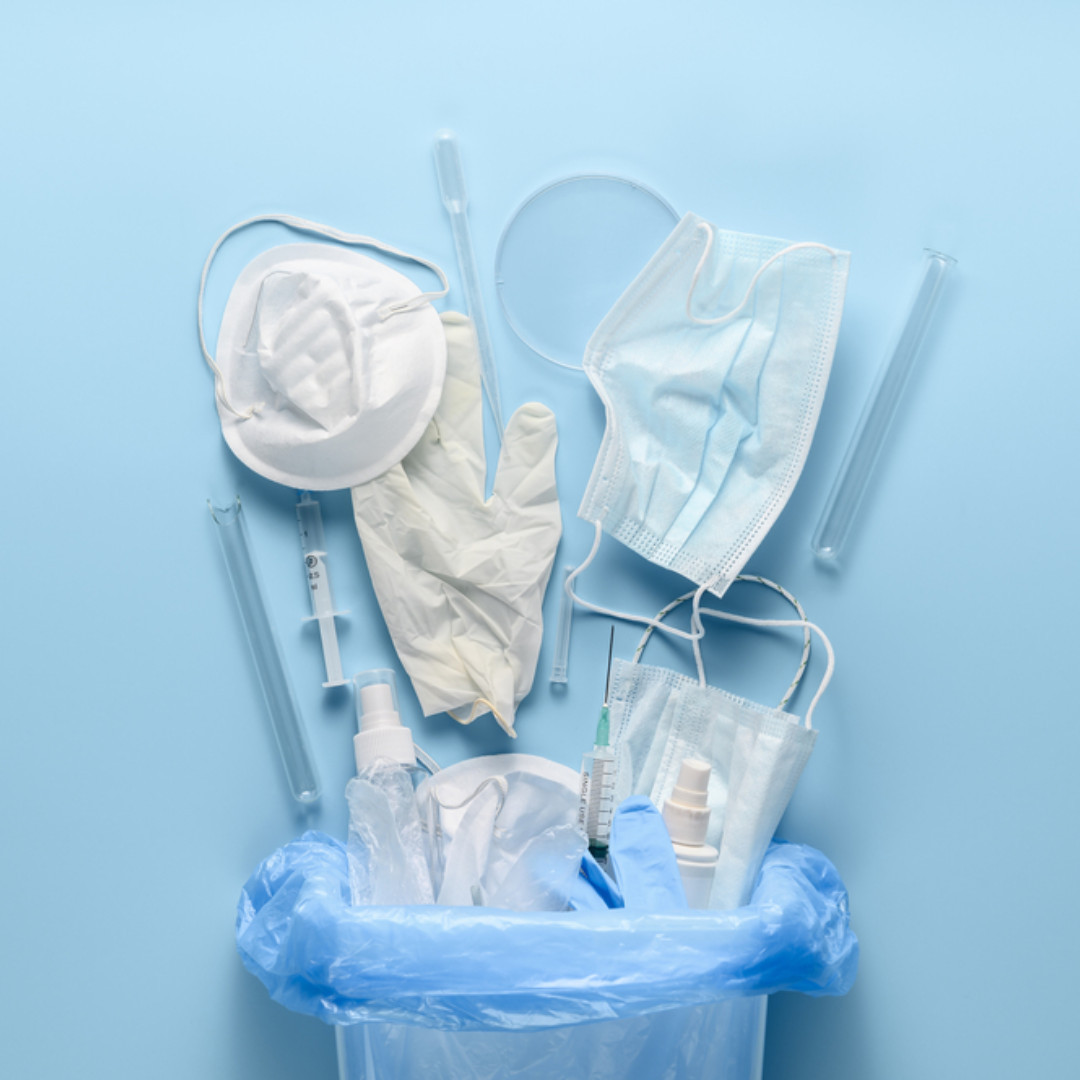Like many other industries, the medical device industry has been undergoing changes recently in order to become more sustainable. Unfortunately, strict regulations mean that changes in this industry are quite slow when compared to others, but positive change is underway.
There are various steps that can be taken to minimize the amount of waste produced through medical devices, as well as reduce the environmental damages that this waste causes and the one of the best ways to start is with better medical labels.
A brief overview of the medical device industry and its impact on the environment
The medical device industry is a critical component of modern healthcare; medical devices like catheters, needles, syringes, and so on are used for a wide range of medical procedures to treat a multitude of conditions and save patients’ lives.
However, many of those same devices can’t simply be reused and are instead disposed of after just one use, creating huge amounts of waste, some of which can be contaminated, toxic, and highly dangerous to humans and wildlife.
The importance of reducing waste in the medical device industry
With so much medical device waste being produced every day in hospitals, clinics, and other healthcare spaces around the world, it’s clear that something must be done. Medical device waste is causing unnecessary dangers and environmental damages that can be avoided.
The importance of reducing waste in the medical device industry lies in its potential to reduce environmental impact, increase efficiency, and lower costs for healthcare providers and patients. By minimizing waste, medical device manufacturers can not only reduce their carbon footprint but also enhance their reputation as environmentally responsible companies, leading to increased customer loyalty and market share. Additionally, reducing waste can help lower manufacturing costs, resulting in more affordable medical devices for patients.
The role that labeling can play in reducing waste
Appropriate medical labeling is one of the simplest and most efficient solutions for reducing waste in the medical device industry. With correct labels affixed to every item, safe disposal becomes a lot easier for all.
Labeling can help reduce waste in the medical device industry by promoting proper disposal and recycling of products. By providing clear and concise information about the product, its materials, and proper disposal methods, labeling can influence consumer behavior, encouraging them to dispose of the product responsibly. Furthermore, labeling can also encourage product reuse, extending the product’s lifespan and reducing waste.
Understanding the waste problem in the medical device industry
Statistics show that the healthcare industry produces a colossal amount of waste each year, and a large part of that waste is made up of medical devices, which can be everything from examination gloves to syringes.
Various factors contribute to the waste problem in the medical device industry, such as packaging materials, excess inventory, and product expiration. These waste materials can have a significant impact on the environment and human health, including pollution, increased greenhouse gas emissions, and the spread of disease.
Types of waste generated by the medical device industry
The medical device industry produces a wide range of different forms of waste:
Infectious Waste – Infectious medical device waste is one of the most dangerous varieties. This includes items like bandages, gloves, masks, and other devices that are contaminated in some way with bodily floods and microbes.
Toxic and Chemical Waste – Toxic and chemical waste products are also produced in conjunction with medical devices. This includes all of the chemicals, like solvents and disinfectants, used in healthcare settings.
Sharps Waste – Sharps waste refers to the many items that are sharp or bladed, like pieces of glass, syringes, needles, and scalpels that have been used for different procedures and operations and have to be disposed of with great care.
Factors that contribute to waste in the medical device industry
A range of different factors make the waste problem worse in the medical device industry:
Regulation – The world of medical devices is under strict controls and forms of regulation that make it difficult to implement any kind of change, as every piece of waste needs to be disposed of in accordance with set guidelines.
Contamination – Another issue with medical device waste is that the waste items themselves are often contaminated in some way, due to their exposure to bodily fluids, bacteria, viruses, and chemicals.
Lack of Disposal Methods – While some medical waste can simply be disposed of like any other trash, a lot of it is hazardous and has to be disposed of in very specific ways, often using high-powered incinerators and other devices.
The impact of waste on the environment and human health
Medical device waste can be very dangerous and risky for both people and ecosystems. There are risks to healthcare workers themselves, cleaning and janitorial staff disposing of these items, people who live near healthcare facilities, and wildlife in areas where such items are disposed of.
The role of labeling in reducing waste
So, what can be done to reduce medical device waste? Well, proper medical labeling is a good way to get started. Medical labels can provide important information about the proper disposal and recycling of products to minimize waste and promote sustainability. They can also help companies track and monitor waste reduction efforts and identify areas for improvement. Overall, effective labeling can play an important role in reducing waste and promoting a more sustainable future.
How labeling can help reduce waste through proper disposal and recycling
Labeling can help reduce waste in the medical device industry in various ways. Firstly, it can provide information about the product’s materials, making it easier for consumers to recycle or dispose of them properly. Secondly, labeling can also include information on proper disposal methods, making it easier for consumers to dispose of products responsibly. Finally, labeling can encourage product reuse by providing information about the product’s lifespan and potential for reuse.
One of the many issues with medical device waste is that labels fade away and items end up being disposed of in the wrong ways or wrong places. By applying clearer, permanent labels to these devices, it’s much easier to dispose of them correctly or recycle them, if applicable.
The impact of labeling on consumer behavior and product reuse
Good quality labels encourage consumers to make use of products correctly, following the requisite instructions for use, disposal, reuse, and recycling. The same logic applies to medical device labels; better labels will ensure that these devices are used and reused safely and appropriately.
Best practices for labeling medical devices to encourage waste reduction
One of the problems with many labeling methods is that they simply aren’t strong or long-lasting enough to cope with the harsh conditions that medical devices are exposed to. Traditional adhesive labels, for instance, can fade or peel away.
The answer is to make use of stronger and truly permanent labeling methods, with labels that actually bond with the material of the products themselves and won’t fade with time or wear down with exposure to chemicals and the elements.
By implementing labeling strategies that are designed to promote environmentally-friendly practices, medical device manufacturers can reduce their environmental impact and promote sustainability. This may include labeling that encourages recycling, the use of recycled materials, and other strategies to minimize waste throughout the product lifecycle. Proper labeling can also ensure that medical devices are properly disposed of, further reducing the amount of waste generated in the industry. By prioritizing waste reduction through labeling, medical device companies can demonstrate their commitment to sustainability and responsible environmental practices.
Such labels also need to be clear and precise, with easy-to-read text and symbols that medical professionals can clearly understand, as well as comply with all necessary medical labeling guidelines.
Conclusion
As we can see, the waste problem associated with medical devices is a serious one, and steps need to be taken to cut down on this waste and make its disposal more efficient. Strong medical labels are a great starting point and can completely transform waste management for any medical device company or healthcare facility.
This content, How Labeling Can Play a Role in Reducing Waste in the Medical Device Industry, was originally shared by Medical Plastics News on February 28, 2023.











